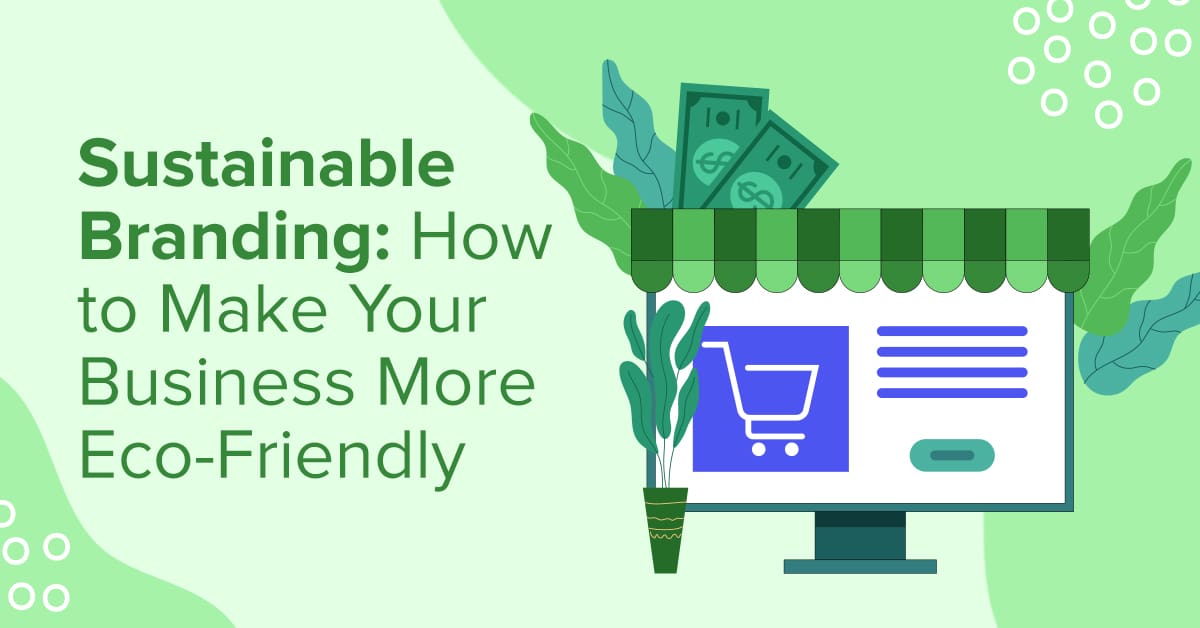
Sustainable Branding: How to Make Your Business More Eco-friendly

Sustainability isn’t simply a buzzword in eCommerce — it’s a commitment and an essential part of any forward-thinking brand’s business strategy. The contemporary consumer is increasingly concerned about environmental issues, which drives their purchasing decisions toward businesses that demonstrate a clear dedication to sustainable practices. In fact, 44% of consumers actively patronize brands that align with their values, especially sustainability.
As outlined by the United Nations, sustainability is about “meeting the needs of the present without compromising the ability of future generations to meet their own needs.” In the context of eCommerce, this means conscientiously utilizing resources and delivering products and services in ways that are environmentally and economically conscious. Beyond this definition though, sustainability opens the opportunity for businesses to innovate, adapt, and create lasting value for both their customers and the environment.
At MyFBAPrep, we leverage our expertise in this sector to promote and implement sustainable practices, helping businesses minimize their environmental footprint while optimizing their operations. In this article, we’ll explore how you can employ a few impactful tactics to make your brand more sustainable (and spread the word of your good deeds).
Optimize packaging to reduce waste
Packaging acts as the protective layer for both your products and your brand’s environmental footprint. As online shopping continues to grow, businesses increasingly face the challenge of balancing their commitment to sustainability with their need to provide robust product protection and a premium unboxing experience.
An obvious step toward striking that balance is determining the right amount of dunnage needed to protect your goods during shipping. This avoids excess materials while ensuring your products are securely packaged. It also saves you money in the long run since you won’t run out of packaging materials as quickly.
The practice extends to the boxes used for shipments as well. Select the correct size boxes to minimize wasted space and reduce shipping costs. For a more concrete display of sustainability, look for eco-friendly alternative materials where possible, such as switching from plastic wrapping to paper.
Strategically place warehousing for efficient shipping
In the quest for sustainability, we must recognize the influential role of logistics. This involves not only how you package products, but how and where they’re stored and the distances they travel. The location of your warehouses can significantly reduce carbon emissions, cut transportation costs, and speed up deliveries.
If you operate your own warehouses, select ones located closest to your largest markets so shipments have shorter and faster delivery routes. Otherwise, consider partnering with a third-party logistics provider (3PL) that possesses a large network of warehouses. For example, at MyFBAPrep, we offer the option to choose a warehouse near the port your goods are shipped into. This localization drastically reduces both the trucking distance from the port as well as the time it takes the shipment to reach the customer, which cuts down on fuel consumption and carbon emissions.
Leverage economies of scale for sustainable distribution
Efficient distribution practices not only reduce costs — they also significantly lessen a business’s environmental impact. This is where leveraging economies of scale comes into play, offering the chance to push your brand closer toward sustainability.
A key component here lies in optimizing your order consolidation. Rather than dispatching multiple shipments for various customers, consolidate them for fewer, larger deliveries. This practice reduces the number of containers used and cuts down on transportation, translating into reduced carbon emissions and lower shipping costs.
As previously mentioned, be strategic about the placement of your goods as well to ensure they’re close to large concentrations of buyers. The minimization of travel distance expedites delivery times and further cuts down on carbon emissions.
Streamline operations to increase sustainability
Efficiency is key to a sustainable eCommerce operation. Streamlined business operations significantly reduce your brand’s environmental footprint while saving you time and money. By implementing innovative and efficient systems in your supply chain, such as precise inventory management and strategic resource allocation, your brand can enhance its sustainability efforts.
With a sophisticated inventory management system, you can avoid overstocking and understocking, which lowers warehousing costs and reduces waste from expired or obsolete products.
Data analysis forms the backbone of sustainability efforts. By examining key data points, you can identify areas within your supply chain where resources are used inefficiently and introduce sustainable alternatives. This could range from energy-efficient lighting in your warehouses to optimizing order routes to reduce fuel consumption.
Communicate your brand’s sustainability
With a roadmap to sustainability in place and meaningful actions in progress, share your story with the public. Transparent communication about your brand’s sustainability initiatives can resonate deeply with your customers, reinforcing your commitment to the environment and setting you apart from competitors.
With conscious consumerism gaining prominence, your efforts can be a powerful marketing narrative that plays on customer values. Craft a compelling story to serve as the basis of your marketing and communications strategy and convince shoppers that you are the ethical choice.
Showcase the steps your brand has taken towards sustainability. This could be anything from adopting eco-friendly packaging to planting trees for every dollar customers spend at your store. Leverage email campaigns, blog posts, social media updates, press releases, and other channels to communicate your sustainability milestones and expand brand awareness.
Transparency builds trust among buyers, and trust in turn builds loyalty. When customers see your brand making tangible efforts towards sustainability, they’re more likely to choose your products over others and become repeat customers.
Wrapping up — Sustainability is more than just good business
The growing emphasis on environmental consciousness has caused consumer expectations to shift. Research now reveals that 66% of global consumers are willing to pay more for sustainable goods, underlining the critical importance of cultivating a sustainable brand.
By embracing the steps outlined in this article, your brand can significantly offset its carbon emissions and aspire to reach a net-zero impact. These efforts are a clear signal to consumers of your brand’s values and are non-negotiable to make a positive impact on the world and differentiate your company name.
The benefits of a sustainable brand extend beyond operational efficiencies and cost savings though. They also enrich your brand’s image, help you resonate deeply with consumers, and ensure a positive contribution to the world. Sustainability is thus the future of successful branding.
Every step you take towards sustainability makes a noticeable difference. Whether you’re just starting your journey to environmental responsibility or expanding your existing efforts, MyFBAPrep is here to support you. Connect with us today to develop a plan to meet your sustainability goals, exceed customer expectations, and build a more resilient and prosperous brand.
Published: May 12, 2022
Updated: June 27, 2023

